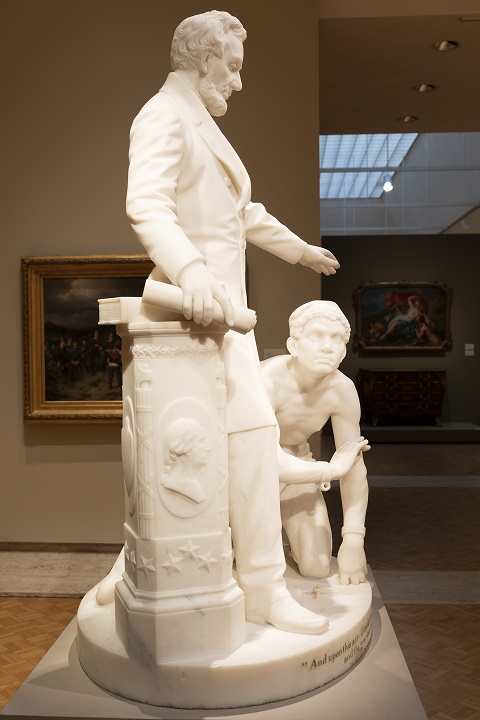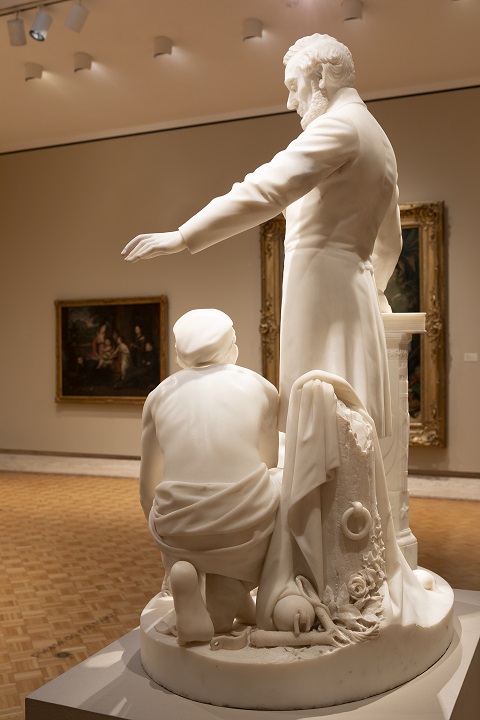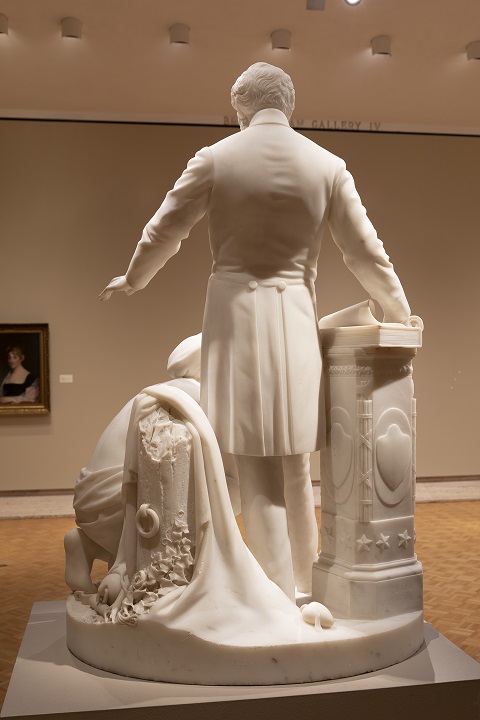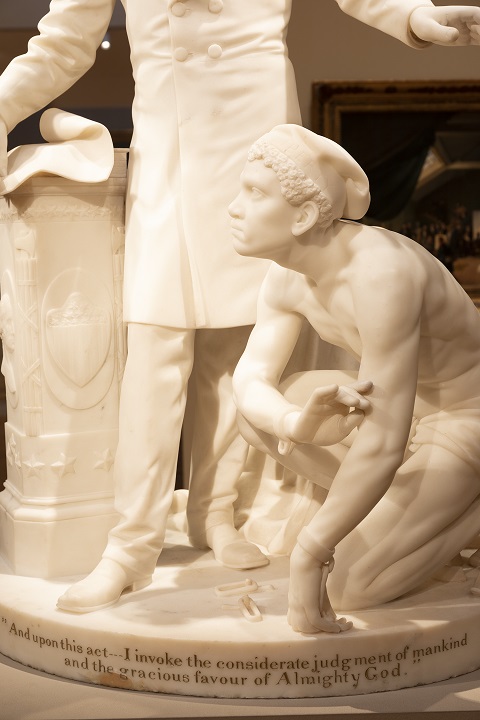On View
- Artist
- Thomas Ball
(American, 1819 - 1911) - Title
- Emancipation Group
- Date
- 1873
- Medium
- White Italian marble
- Dimensions
- 45 1/2 x 27 9/16 x 21 1/4 in. Overall
- Credit
- Gift of Dr. Warren E. Gilson
- Accession No.
- 1976.157
- Classification
- Sculpture
- Geography
- United States
Related
After 1873 [1870s], allegedly donated to the City of San Francisco “by one of the Nob Hill-Comstock Lode millionaires” and located in the Courthouse [1]; after April, 1906-1974, private collection (San Francisco, CA); 1974, acquired by antique dealer (Salt Lake, UT); 1974, sold to Anthony B. Christensen (Bountiful, UT) [2]; by November 1975, Dr. Warren E. Gilson (Middleton, WI) [3]; 24 November 1975, deposited on long-term loan to Elvehjem Art Center; 1976, gifted to Elvehjem Art Center [now called Chazen Museum of Art].
[1] in letter from Anthony B. Christensen to Dr. Eric McCready, Director of the Elvehjem Art Center: "To my knowledge this piece was donated to the City of San Francisco by one of the Nob Hill-Comstock Lode millionaires in the 1870s. It was placed in the San Francisco City Courthouse and removed from the courthouse after the "Great Earthquake" and placed in a private estate where it remained until last year [1974]." This information needs to be researched and confirmed.
[2] Anthony B. Christensen is the owner of Anthony’s Antiques and Fine Art, Salt Lake City, UT (founded ca. 1990, https://anthonysfineart.com/pages/contact-1).
[3] Dr. Warren E. Gilson (1917-2000), UW alumnus and founder of Gilson, Inc., a Wisconsin firm specializing in medical instruments https://news.wisc.edu/amid-changing-market-for-scientific-instruments-gilson-continues-to-lead-2/; Gilson was a collector of decorative arts and donor of over 200 objects to the Milwaukee Art Museum between 1978 and 1998: https://blog.mam.org/2017/05/09/questions-of-provenance-stories-behind-the-names-part-1/#more-14464; Gilson donated 16 objects (paintings, sculpture, antiquities, Asian ceramics, and decorative arts) to the Elvehjem Museum of Art between 1975 and 1994.
- Craven, Wayne. "Thomas Ball and the Emancipation Group." Bulletin 1976-77. Elvehjem Art Center (1977): 43-51.
- Fryd, Vivien Green. "Hiram Power's Bust of George Washington: The President as an Icon." Phoebus: A Journal of Art History, 5 (1987): 14-27. p.27, fig. 13
- Chazen Museum of Art. "re:mancipation." Madison, WI: Chazen Museum of Art, 2024. pp. 9-10, 77-78, 81, 141, 187, 195, figs. 2, 14
- re:mancipation: Chazen Museum of Art, 2/6/2023–6/25/2023
The Chazen Museum of Art welcomes comments or inquiries about works in our collection. Please allow two–three weeks for a response. Chazen staff is not able to provide valuations or authentications and such inquiries cannot be answered.
"*" indicates required fields



